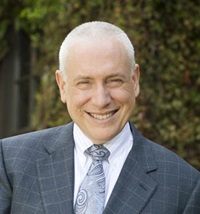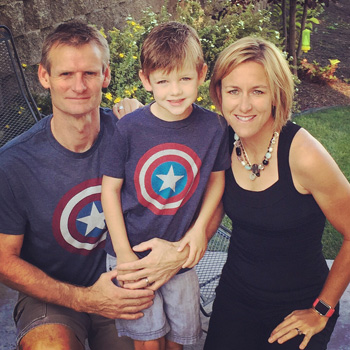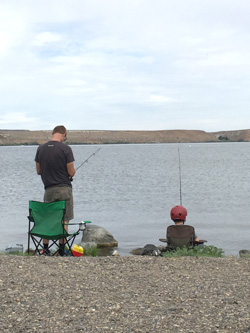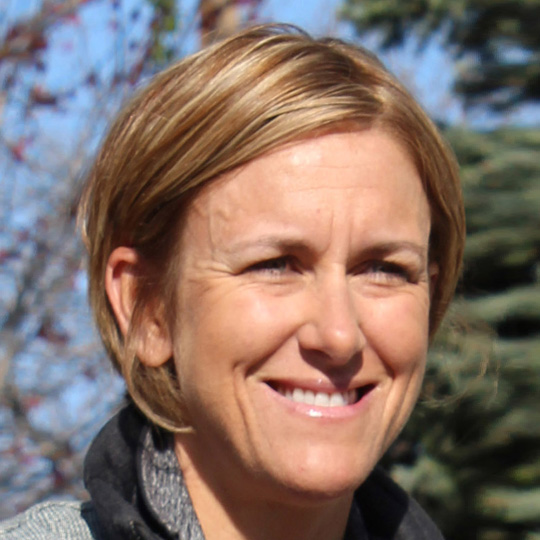Dr. Pate’s Prescription for Change
Kristin Armstrong on Community Health as a Team Sport

I’m not sure many health systems have Olympians on their leadership teams.
St. Luke’s has two: Lyle Nelson in the McCall community and two-time gold medalist Kristin Armstrong, who serves as manager for community health for St. Luke’s Health System’s West Region.
Both spend considerable time thinking about how we partner with our communities to improve health. St. Luke’s views community health as something we contribute to in partnership with many other organizations and agencies, in order to improve the health of those communities, and Lyle and Kristin help create and nurture these partnerships to achieve things that none of us could do alone. And it is paying off.
Here is Kristin with her perspectives on the dynamics of community health.
- David C. Pate, M.D., J.D.

As an active, plugged-in community member, patient, mom and performance perfectionist, I find myself at an interesting crossroads now within St. Luke's Health System, helping to glue pieces together to help form a community health strategy for efforts made outside of the walls of our hospitals and clinics.
The delivery of health care is changing. While hospitals will always play the key role in the provision of health care, the cost of health care is not sustainable and continues to rise as our population’s health declines.
Recently, I have been asking friends, family and co-workers what “community health” means to them, and out of the dozen people I asked, I have received a dozen different responses. However, there has been one common theme – children. It may be a cliché that “children are our future,” but it also seems to be a shared sentiment.
Since I was a kid, times have certainly changed. When I was growing up, physical education was mandatory in school (and kids actually looked forward to it), computers were rare, video games and television weren’t interesting, being outdoors from sunrise to dusk was the norm (just as long as you made it home before dinner) and food choices were fewer (there wasn’t a dedicated aisle of sugar cereals to choose from).

But in recent years, a lack of activity has combined with poor eating habits to send obesity rates skyrocketing. As a result, today’s younger generation may be the first to not outlive their parents, and type 2 diabetes, once known as an adult disease, is now being reported in pediatric clinics.
As many hours as I spend riding my bike, I have the opportunity to do a lot of thinking – during 90 percent of my bike rides these days, I think about what it is going to take to improve the health and well-being of our children and how we can activate individuals, organizations and communities to contribute to the health of everyone, children and adults alike.
We know that physical activity can have an effect, not only on the increasing problem of childhood obesity, but on learning and behavior in the classroom as well. Improved attendance rates and self-discipline, better chances that a child will go on to further education and reduced crime rates also have been linked to increased physical activity. Implementing activity as part of the school day is a win-win situation.
So let me share with you just one example of the kind of work I get to do along with St. Luke’s community partners. This will paint the picture of how I see community health.
Every school within the Nampa School District qualifies for Title I supplemental funding to enhance the education of at-risk and low-income students. Some of the lowest-income schools lack adequate access to parks and open space when school is not in session, and due to a high level of poverty, there is the need for additional activity options to decrease the growing trend of obesity among Nampa school-aged children.
Through a partnership among the Blue Cross of Idaho Foundation for Health, the Nampa School District, the City of Nampa and St. Luke’s Health System, we were able to build two new walking/running tracks and renovate five additional tracks, all of which have provided the opportunity to develop walking recess programs, activity time before and after school and a chance for families to walk and run together in safe environments.

Five months after the track was built and a walking/running program was started during recess, the kids at Endeavor Elementary School in Nampa had collectively walked 15,057 miles and had a 99.6 percent school participation rate.
Being inspired is one thing. Being activated to contribute to the health of others is another. I can’t recall being successful in anything I have accomplished without a team, and so I know it is going to take strategic partnerships, supported by leaders in health care, public policy, businesses and education, to make true impact.
What do we have to do, as a community, to implement activity into all of our schools daily? Let’s take action and request that changes be made – for our children’s benefit and for their health!
About The Author

Kristin Armstrong-Savola was formerly manager of community health for St. Luke’s Health System’s West Region.
